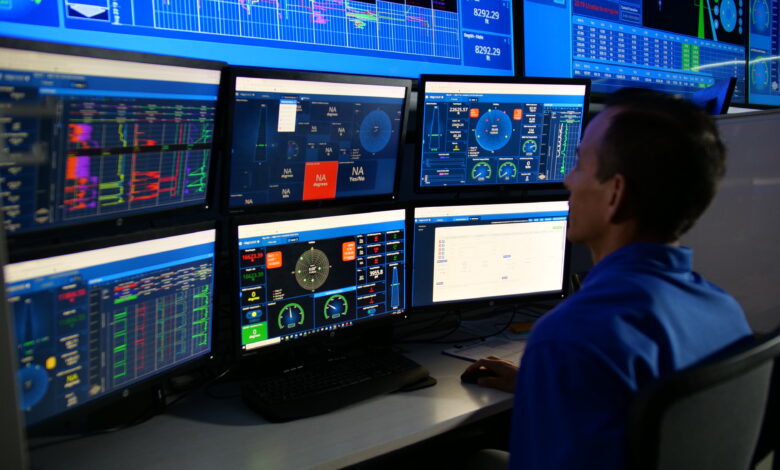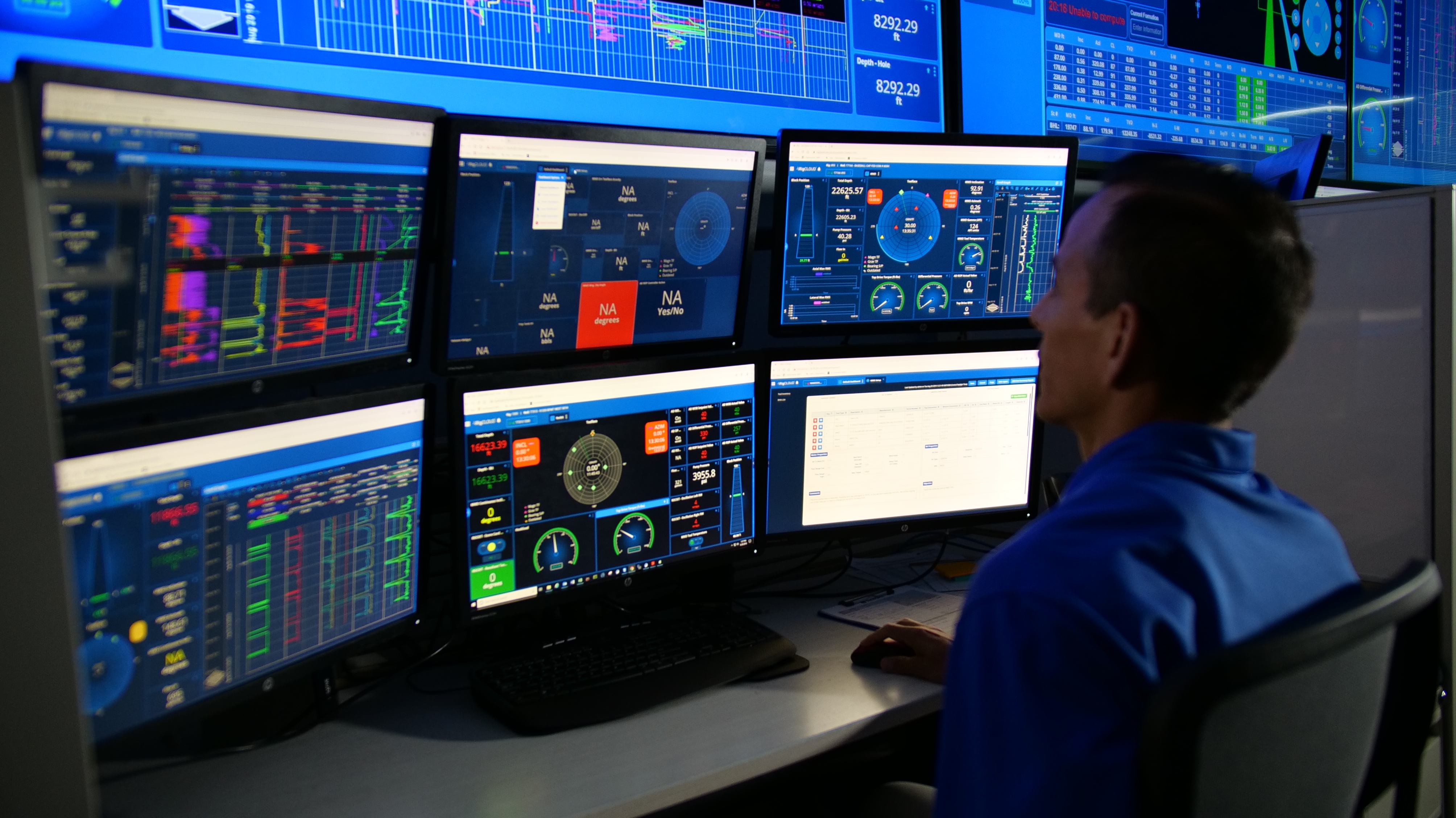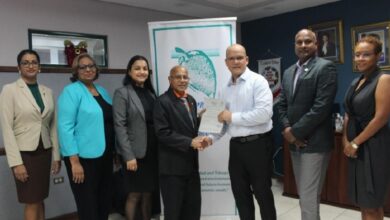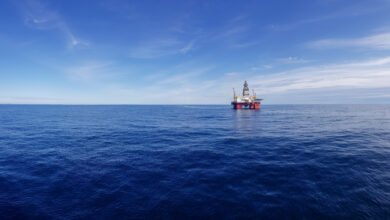‘Smart evolution’ enabling efficient remote operations and better use of rig data will be the way forward

Nabors’ Miguel Sanchez: Pandemic accelerated industry’s appetite for digitalization and automation, but companies must remain disciplined with investments
By Linda Hsieh, Editor & Publisher
Miguel Sanchez is Vice President of International Operations for Nabors. He also served as IADC’s Division VP International Onshore from 2019-2020.
Nabors has a large international fleet operating in multiple markets around the world. So when you look at that rig fleet, what do you see as the biggest challenges that you face today as a drilling contractor?

When it comes to challenges, the biggest one is uncertainty around the oil price. We know it fell to very low levels last year because of the pandemic and its repercussions on energy consumption, plus the price war between Russia and Saudi Arabia. You might say it was a perfect storm.
Recently we’ve seen oil prices hover around the upper $40s range, yet operators are not ready to start drilling again because of uncertainty around what 2021 will look like in terms of energy demand. Everybody’s still waiting to see if the world will start traveling again and if things return to previous levels.
Obviously, this uncertainty creates challenges across the industry, including for us, the drilling contractors. How do we manage our people and assets? Should we reassess our training programs and ensure we have the right people in the right place? How do we continue to motivate our employees, be sustainable as a company and create value for our shareholders?
Do you believe the worst of this perfect storm is over?
I believe we are close, but operators will remain cautious for, at least, the first half of this year. They must have a better understanding of what the new normal will be before they decide how to move forward on drilling programs. At Nabors, we will also maintain the same financial discipline that we had in 2020; we want to ensure that we can be stronger for future cycles.
We know COVID-19 caused a lot of headaches for our industry in terms of travel, crew safety and supply chain. So now that we have a little bit of distance from when everything started, do you have any lessons learned at Nabors?
One of the things we learned early on was the importance of remaining true to our values. I believe that we were able to manage through the pandemic by really going back to understanding what we’re all about as a company and what we deliver.
One of the wins that we had, as the largest drilling contractor in the world, is creating an internal website where we used digital dashboards to track the most important KPIs, country by country, on a daily basis. That gave us a robust repository of information that we could share with the entire company around the world.
Collaboration was another big learning. Internally, when many of our employees started working from home, each of us had to make a lot of adjustments. We had to learn how to collaborate as part of a massive organization to ensure that we maintained business continuity.
Externally, our industry also came together to find solutions for common problems. For example, we had conversations with customers and regulators, often facilitated by IADC, on how to get crews back into a country and out to a rig. We learned that, in situations like this, there is power in all companies uniting and working together to do the right thing for our employees and our industry.
Have you seen any negative impacts on your safety performance during this time?
No, but we dedicated a lot of attention to ensure safety was never compromised. We enhanced monitoring of our crews to confirm they adhered to the appropriate social distancing. When people had to stay on a rig longer than expected, we implemented guidelines to stipulate they were taking the right amount of rest within each shift. For crews leaving from point A to go to point B, we gave them extra support during their travel. We made sure our employees knew – and their families knew – they were being looked after by the company.
Has COVID-19 led to any permanent changes in the way that you operate?

For years, we have prioritized digitization, automation and integration as part of our smart evolution. This has been our way forward, regardless of COVID.
But COVID-19 has accelerated the need for efficient remote operations. Although the industry was already heading in that direction, when we were faced with a crisis, Nabors was able to act swiftly to help our customers realize the considerable benefits of remote operations. Through integration of our digital operations platform, RigCLOUD, remote directional guidance system, SmartNAV, and our automated slide execution system, SmartSLIDE, we were able to safely remove people from location while improving performance and efficiency.
The industry’s appetite has surged exponentially for this evolution. We must continue to provide smarter solutions that allow the customers to manage the information and oversee their operations remotely, to extract more value out of that information. The pandemic has certainly propelled this trend forward, and it aligns perfectly with the pioneering spirit that Nabors has embraced for five decades.
So is technology where you see the biggest opportunity for drilling contractors to make step changes in efficiency?
Absolutely. By leveraging data from our rigs, the remote operating center drives continuous improvement offerings that can be scaled globally so our customers can realize the value of these technologies on a mass scale. There is predictability and accuracy in that data that cannot be replicated in any other way. The sheer amount of detail that can be harvested proves incredibly valuable when adjustments need to be made in a timely manner. Operators should not have to wait to make decisions, they need that agility to be able to make informed changes; that’s where technology comes in.
You mentioned that drilling contractors need to maintain financial discipline. How do you make a choice between that and the need to invest in new technologies need to boost performance?
No doubt about it, there are limited discretionary funds today, so we have to be very disciplined about making the right investments, which means talking to our customers to understand how technology can deliver the most value to their operations. At Nabors, this means we are laser focused on developing our portfolio of solutions that drive performance for our customers. We will continue to aggressively invest in technologies – like SmartNAV, SmartSLIDE, SmartROS and SmartDRILL – that we know will deliver differential performance for our customers in the future.
It’s hard to imagine right now that contractors will be investing in building new rigs anytime soon. With the current assets that we have, what do you think drilling contractors can be doing in the next few years to ensure that those rigs will remain as competitive as possible?
You’re right that we likely won’t need more rigs for the foreseeable future. But that doesn’t mean the work is done. At Nabors, we have robust procedures for ensuring continual maintenance on our rigs to verify they stay in top working condition and are ready to be rolled out when needed.
This includes our smart stack rig preservation procedures, so these units can be easily reactivated when needed, decreasing mobilization times. We’ve also developed extensive upgrades in the codes that we use to communicate with the rigs, so we can deploy new technologies through the upgraded code once we go back to work.
When it comes to ESG, we’ve seen a big push for emissions reductions from Europe- and US-based companies. Are you also seeing ESG requirements in other international markets?

Certainly, it’s not just in Europe or the US. We’re seeing more emphasis on ESG with national oil companies, international oil companies and local operators everywhere. Every one of them is asking, “What are you doing as a company to align with ESG initiatives?” It really speaks to the long-term commitment of these companies, and obviously drilling contractors, so we can decrease the impact on our world. While we work to reduce emissions and consumption, we also have goals set for the future to maintain our momentum.
Of course, ESG isn’t new; it’s just getting more attention now. For example, for the last six years in Oman, we’ve been redirecting wastewater to grow trees around the facilities where we drill. In some places we now have small trees that are home to a large number of birds. We created pockets of healthy, beautiful green trees in the middle of the desert.
So, we have our commitments to ESG, and we’re fulfilling these commitments in the US and abroad to ensure they have the right impact on our employees, their families, our customers, investors and stakeholders.
What are your thoughts on how drilling contractors’ business models can evolve in the coming years? Many contractors have invested heavily in technologies to push performance, yet the value that’s created isn’t necessarily reflected in dayrates.
Our customers should not look at how much they’re paying per day because there is value outside of that dollar figure. They need to take into account the contractor’s efficiency, along with execution versus expectation. Is the contractor operating ahead of the timeline? Are they compromising safety? Those answers need to factor into the equation, and we believe the industry is due for a change on how they calculate value.
Look at everything we’ve discussed so far and how heavily we’re investing in technology and our assets around the world. We continue to deliver value to our customers – we consistently exceed customer expectations when it comes to AFEs and the time required to drill the wells – but is the business model sustainable? One approach may be to consider joint establishments of KPIs. Then, if we exceed those KPIs, there is a bonus, and if we don’t, the result is a malus. That is a true model where you can drive continuous improvement for everybody.
Is the sticking point in that model where you set the bar for the KPIs?
There must be collaboration when it comes to setting that bar, and both sides have to be open and share their metrics. What is the history of what they’ve achieved and how can we do this better? Some operators have put in the time and money to study their own data, but some haven’t. To achieve greater success, you must be willing to do the work and share which KPIs have been adopted by other operators to measure the success of our technologies.
The key is a partnership between the operator and the drilling contractor. We have to be more aligned with their strategies. We need to understand where our customers are heading, their goals and what challenges they face so that we can deliver value for them.
The consistent success we’ve had at Nabors stems from transparency in our performance. We have cross-functional teams that actively share information, so we really understand the best way to execute a project or to deploy a new technology to deliver an efficient service for the operator.
In this type of partnership, you don’t even really address cost. You focus on the challenges and you deploy the best from both ends to achieve the solution. That’s how you generate continual improvement across the board. DC
SmartNAV, SmartSLIDE, SmartROS and SmartDRILL are trademarks of Nabors.




